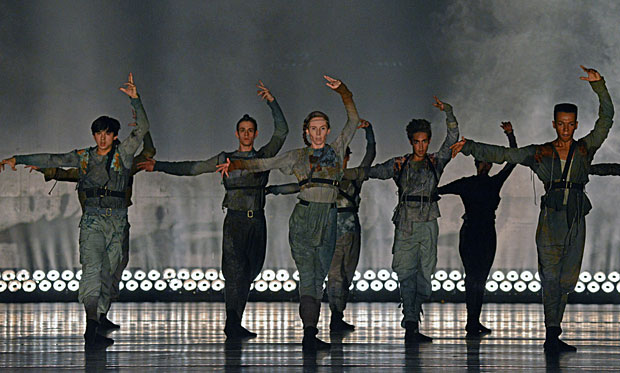
© Dave Morgan, courtesy the Royal Opera House. (Click image for larger version)
The Royal Ballet
Four Temperaments, Untouchable, Song of the Earth
London, Royal Opera House
25 March 2015
Gallery of pictures by Dave Morgan
www.roh.org.uk
It’s a truism that any startlingly new dance-maker without an early elite training will have based his (or her) choreography on their own physique: look at Mark Morris, Wayne McGregor and Hofesh Shechter. Lauded as soloists for their originality, they pass on their physical preferences to members of the companies they set up. Then they are invited to take on the challenge of working with classically trained dancers to extend their unconventional ideas in fresh directions.
The result, if successful, is usually a compromise. Ballet dancers can supply a big vocabulary of steps developed over the centuries; the newcomer brings an idiosyncratic approach to adapting them and the dancers’ bodies to his own style. McGregor has done so with the Royal Ballet, where his work is markedly different from the pieces he makes for his own company, Random Dance. But Shechter has made no such compromise. Untouchable, given its world premiere at the Royal Opera House, could just as well be performed by his own company or included in a community outreach programme.
He has made 20 mostly young ballet dancers move in the way he and his band of contemporary dancers do: curved inwards, loping in simian strides, arms dangling or raised up, fingers extended. They’re grounded by gravity, even when they hop in unison, like the primitive tribe in Nijinsky’s Rite of Spring. What was radical in 1913 is no longer a big deal for modern ballet dancers to place their weight downwards, hunch their shoulders, turn their legs in instead of out.
Nor is it unusual to ask them to coalesce as an anonymous group in shifting patterns. It’s what a corps de ballet is trained to do. (In fact, quite a few of the chosen cast of ‘low-ranking youngsters’ are soloists, including veteran Thomas Whitehead). Untouchable presents them initially as a horde, so darkly lit that their outfits of desert combat fatigues, topped off with makeshift headgear and hairpieces, make them barely visible, indistinguishable. Sepulchral voices and percussive thumps accompany them. (Music credits go to Shechter, his regular collaborator Nell Catchpole, and Chris Allen.)
Who is this corps of untouchables? Paramilitaries, insurgents, sects, refugees, immigrants or all of the above? Shechter wants to keep us guessing. They seem threatening as a pack until they huddle together in a panic towards the back of the stage. Are we meant to pity or fear them – or maybe identify with them, as they manoeuvre for survival?
Factions and individuals break away and are reabsorbed, uniting in folk-dance circles that could be reassuring or as sinister as The Rite of Spring. The music sounds Mediterranean/Middle Eastern, the tribal steps no more than basic pacing.

© Dave Morgan, courtesy the Royal Opera House. (Click image for larger version)
At one point, bars of light at the rear illuminate the mob in silhouette as chants of what sounds very like ‘Nigel Farage’ are yelled in chorus. A solitary man (Matthew Ball) comes forward to be joined by others in throes of rage or despair. A slow-motion line-up of figures executing basic ballet tendus, arms in elegant fourth position, emerges from the smoky darkness. The music racket changes to a presumably ironic rendering of ‘Besame Mucho’ – ‘Kiss me much more’ – for reasons that escape me.
The performers revert to resembling dispossessed civil war victims or desperate refugees until they suddenly jump up and down in unison. The sound goes all woozy, the lights fade and the piece peters out after 30 long minutes. Shechter hasn’t accounted for what this tribe (or rabble) has undergone or how they have been changed by their experiences. Since we don’t know anything about them, and can’t see their faces, it’s hard to care. His work for his own company is far more explicit – and far louder. He has pulled his punches with this commission, though his fans at the premiere pretended otherwise.
Untouchable was oddly sandwiched between two masterworks reflecting on the human condition: George Balanchine’s The Four Temperaments and Kenneth MacMillan’s Song of the Earth. Both now take place on unadorned stages in simple costumes based on practice dress. (Wisely, elaborate original designs were soon abandoned.) Clearly lit, the dancers let the choreographers speak through them, while the music provides more layers of interpretation.
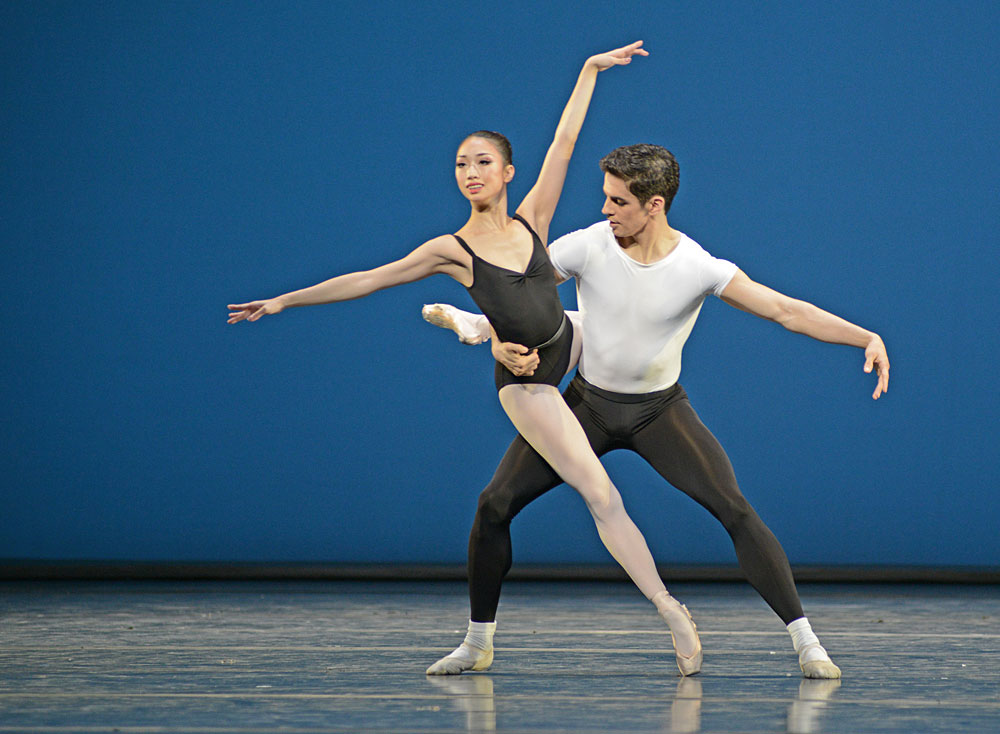
© Dave Morgan, courtesy the Royal Opera House. (Click image for larger version)
The Four Temperaments opens with a gesture of formal politesse, the man (Valeri Hristov) extending his hand to the woman (Itziar Mendizabal). She takes it and launches into fiendishly unballetic positions on pointe while maintaining her cool demeanour. Akane Takada was initially less secure in her Sanguinic variation with Federico Bonelli as her cheerful partner but soon gained blithe confidence. Bonelli thoroughly enjoyed himself in his frolics with a quartet of female attendants.
Steven McRae was spectacular in Melancholic’s lunges and backbends, though he never allowed himself to fall fully off-balance in the risky role. Edward Watson seemed to re-invent himself as a quixotic Picasso pierrot in the Phlegmatic variation, teased by his quartet of callous women. He is dancing better than ever after coming back from injury. Both red-headed men then had to deal with Zenaida Yanowsky’s Choleric woman on the verge of a major tantrum. She was truly splendid, bringing the ballet to a rousing conclusion.

© Dave Morgan, courtesy the Royal Opera House. (Click image for larger version)
Song of the Earth also reveals the temperaments of dancers in the six poems that make up the text of Mahler’s song-symphony. Though the principal couple, Marianela Nunez and Thiago Soares on the first night of this revival, appear early on, they are overtaken by other dancers until the final section. Yuhui Choe was enchanting in the third song, ‘Of Youth’, among her playful girlfriends and bouncy boys. Melissa Hamilton, feminine and desirable, bemused Alexander Campbell as her would-be swain in the fourth song, ‘Of Beauty’.

© Dave Morgan, courtesy the Royal Opera House. (Click image for larger version)
Nunez was grave and brave as the mournful solitary woman in the second song, having to come to terms later on with the death of her lover and her own awareness of mortality. Nunez was so impressively resolute in the role that she lacked the vulnerability that can break your heart. Soares had the poignancy of a man out of his depth without the powerful technique to sustain his lengthy encounter with the Messenger – Carlos Acosta, in fine form. Acosta was discreet in the role of the Eternal One, Der Ewige, as he is called in German – not a sinister harbinger of doom but an ever-present reminder of what awaits us all. Acosta brings a mature understanding of a role originally created on a young man, giving the ballet due faith in Mahler’s hard-won hope of eternity.
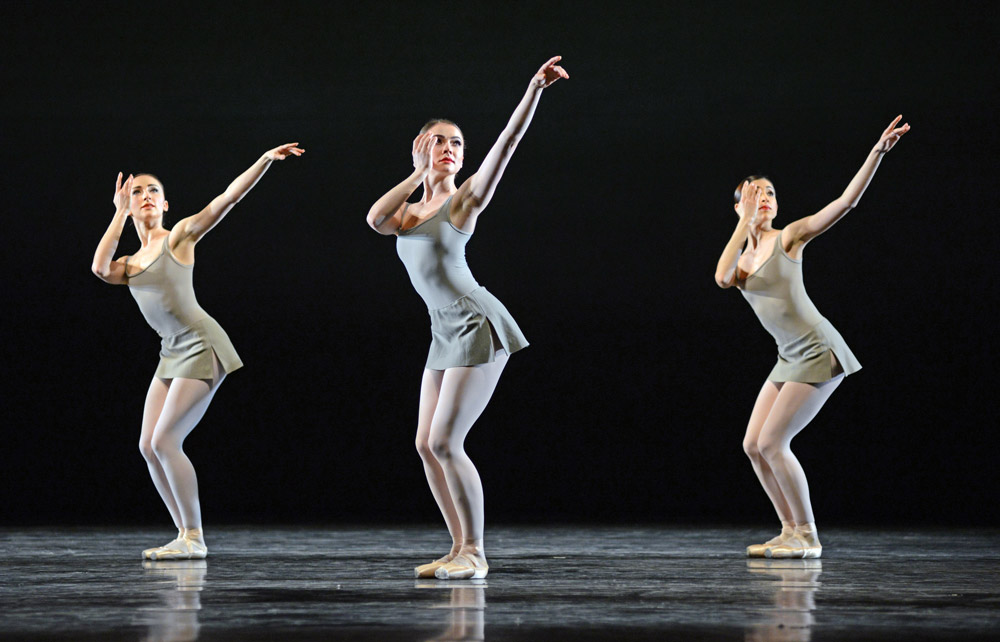
© Dave Morgan, courtesy the Royal Opera House. (Click image for larger version)
Stagers of these ballets do need to be aware of sight-lines in the Royal Opera House. The fine singers, Catherine Wyn-Rogers and Samuel Sakker, new to MacMillan’s Song of the Earth, sometimes obscured the dancers, who were often too near the wings in any case. At least a third of the audience cannot see performers at the edge of the stage on either side. Shechter can’t have been told that his cast, when huddled downstage right, would have been invisible to people seated on the left of the auditorium. Kevin O’Hare, like Dame Ninette de Valois before him, should ensure that old hands, as well as newcomers, must try out different parts of the House instead of supervising stage rehearsals from the privileged centre.












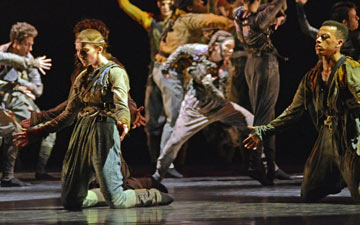

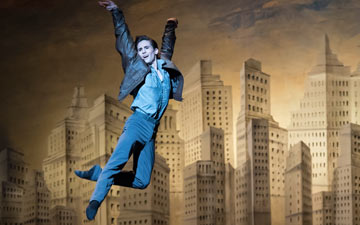
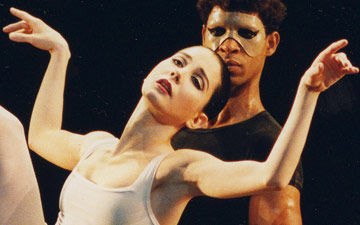

“At least a third of the audience cannot see performers at the edge of the stage on either side. […] Kevin O’Hare, like Dame Ninette de Valois before him, should ensure that old hands, as well as newcomers, must try out different parts of the House instead of supervising stage rehearsals from the privileged centre.”
I completely agree. A quick glance at the seating plan suggests that probably 1/4 to 1/5 of all the seats are located down the sides of the auditorium, and of the seats in the centre blocks by no means all will have an unrestricted view of the stage. Even from the centre of the stalls circle, the singers’ bodies got slightly in the way of the dancers at times in “Song of the Earth”. If you’ve ever seen, for example, Christopher Wheeldon’s “Tryst”, which at one point has virtually all the dancers lined up along the entrances to the wings on either side, you realise just how much of the stage is invisible.